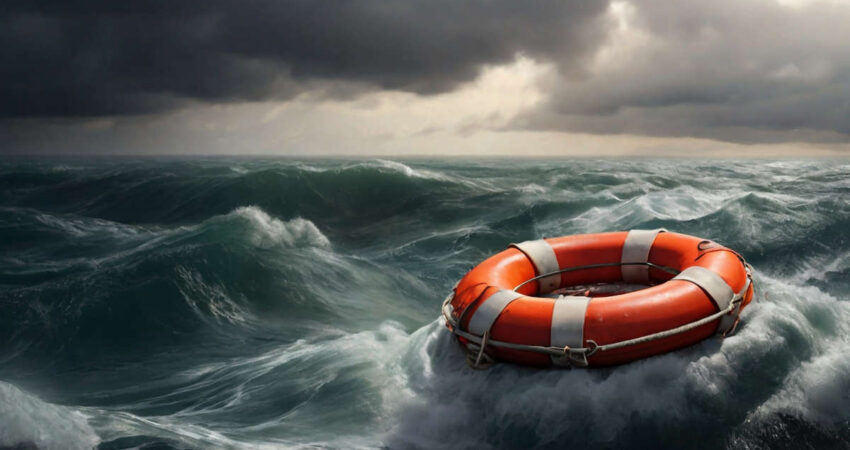From January to November 2024, despite the conflict in Ukraine, EU countries spent a record €6.3 billion on Russian gas, 18% higher than in 2023. This trend has continued in 2025: in February, the EU bought around 74.3 million cubic meters of LNG from Russia every day, 11% higher than in the same period in 2024, according to independent energy think tank Ember.
Europe’s continued purchase of gas from Russia is not new. But what can explain such a noticeable and steady increase in its imports and what can we expect in the future? Experts believe that the EU is beginning to lean more and more towards the idea of easing gas sanctions against Russia. The current economic and geopolitical circumstances are such that Europeans are likely to have no other choice.
No alternative to date
Russian energy resources attract European buyers primarily because of their price. It is true that most LNG now comes to Europe from the US (about 45% of total EU imports versus 18% from Russia), but while Russian supplies are growing, gas imports to the EU from the US, by contrast, are declining for the third year. There are several reasons for this trend, and one of them – though only one – is precisely the cost of US LNG. Europe has already repeatedly criticised Washington for its pricing policy. As European Commission president Ursula von der Leyen stated, Europe was able to partially compensate for the loss of Russian energy imports thanks to the United States. But this was via higher prices, which affected the competitiveness of many European industries – especially energy-intensive sectors of the economy. Former French finance minister Bruno Le Maire openly accused Washington of trying to take advantage of its partners, saying that the Americans sell their LNG to European companies at a price “four times higher than the price at which they sell gas at home.”
Christoph Halser, a gas analyst at Rystad Energy, describes the price difference between Russian and US LNG as “significant” and noted that “spot deals with Russia in 2024 increased as LNG delivered from Russia’s Yamal terminal was priced significantly lower than gas delivered from the US.”
The low price of Russian gas seems particularly attractive given that three years after the energy crisis, European economies are feeling the full pressure of high oil and gas prices.
In addition, gas storage reserves fell seriously in 2024, following a cold winter and a decline in wind energy generation in Europe. All this makes the EU even more susceptible to Russian gas supplies. It is also obvious that ending them entirely by 2027, as Brussels previously planned, would lead to a sharp increase in gas prices in Europe, as no real alternative to Russian LNG has yet been found.
US LNG is no longer attractive
However, it is not only the favourable price that is pushing the EU towards Russian gas. Europe’s main LNG supplier, the US, is not yet able to meet all the needs of EU countries. This is confirmed by TotalEnergies, the largest seller of US gas. Patrick Pouyanné, chairman of the company’s board of directors, advised against the EU giving up Russian supplies by 2027: the market will not be able to find a substitute for them until new production projects and the construction of regasification terminals are launched around the world. At the same time, Pouyanné says, the European Union should also negotiate with Trump on guaranteed LNG supplies, sign more long-term contracts, and renegotiate carbon taxes that have driven up the cost of electricity.
However, it is the US specifically that has major problems with new projects. Representatives of more than a dozen LNG terminal projects in the US are struggling to secure financing and overcome legal hurdles. Analysts say that the risk of falling prices due to a possible surplus of LNG supplies to the domestic market, litigation, and a limited infrastructure, unready to meet the surge in demand, may slow down the development of the US industry.
The climate impact of LNG exports from the United States and the long lifetimes of these fossil-fuel linked projects have also proved to be so serious that former president Joe Biden last year halted the commissioning of LNG terminals for a year, notes Ben Cahill, director for Energy Markets and Policy at the Center for Energy and Environmental Systems Analysis at the University of Texas at Austin.
But it is not just these factors that make the EU betting exclusively on American LNG extremely risky.

Adobe Stock: #688863760
Trends in 2025 remain uncertain due to Washington’s unpredictable policies, according to a report by Ember. With the changing geopolitical situation, the US cannot be relied upon as a major supplier of European gas, due to increased political risks that jeopardise both price stability and energy security. Additionally, experts say that the significant climate impact of US LNG, whose emissions are comparable to coal, is a cause for concern.
President Donald Trump recently urged world powers, including the EU, to buy more US LNG, threatening otherwise to sharply increase export tariffs on European goods. Posting on Truth Social, he wrote, “I told the European Union that they must make up their tremendous deficit with the United States by the large scale purchase of our oil and gas. Otherwise, it is TARIFFS all the way!!!”
The highly regrettable fact that Donald Trump has decided to implement his threat by starting a trade war with Europe must be acknowledged.
As Ben Cahill emphasises, although the EU is prepared to increase energy exports from the US, this is not how commercial deals work: contracts are signed by companies, not governments, and signing long-term contracts for 15 to 20 years is not straightforward. “Both European Union and Japanese buyers will be wary of suggestions that they should displace Russian LNG with US gas. Cost and energy security considerations may discourage hasty decisions. And buyers are conscious of legal and policy risks in the US,” Cahill concludes.
Experts at Brussels-based think tank Bruegel say the EU cannot sign new US contracts without shielding its economy from the effects of US duties. Their report states that the EU should back up any offers to buy more from America “with a credible threat of retaliation that could be implemented if the US decides to impose tariffs on EU exports.”
Paradoxically, it is the US that is now preventing the EU from imposing new sanctions on Russian energy products. According to Politico, the EU did not take a decision on a new package of restrictions in February because it has not yet been possible to reach an agreement with the US on additional gas supplies. Most likely, the parties cannot agree on either the volume of purchases or their price. In this respect, plans to completely abandon Russian LNG have been put on hold. The EU did not publicise the relevant roadmap, noting that “the timeline has been pushed back in light of recent geopolitical events.”
Renewed cooperation
German companies – especially those in the east of the country – are actively supporting the return of Russian gas to the EU. Some are even making concrete plans in this regard. It is specifically Germany, Europe’s largest economy, that has suffered the most damage from the EU’s rejection of Russian energy. German industry has been built on cheap Russian gas, so the rise in oil and gas prices led to a slowdown in economic growth and a number of businesses have been forced to move production abroad.
Christian Günther, head of Leuna Chemical Complex, one of Germany’s largest chemical enterprises, says that the only way to revive Germany’s chemical industry is to resume Russian gas supplies. If Europe is expected to help finance Ukraine’s reconstruction in the future, Germany must be economically strong to contribute, he stated.
For his part, Saxony-Anhalt’s economy minister Sven Schulze is convinced that the resolution of the conflict in Ukraine is likely to lead to a resumption of Russian–European energy cooperation. “If peace is achieved and we have full confidence that Russia is not threatening Europe, we should be open to discussing future Russian gas supplies. I believe it would be wrong to permanently rule out their resumption,” he said.
According to Jonathan Stern, a leading expert at the Oxford Institute for Energy Studies, the return of some Russian gas supplies could lead to lower electricity prices in Europe and provide a transition period until more liquefied natural gas starts to enter the market from 2026.
All this is undoubtedly well understood in Brussels. According to the Financial Times, European officials are already discussing whether it will be possible to resume supplies not only of LNG but also of pipeline gas from Russia if the conflict in Ukraine is resolved. According to the paper, the idea has been endorsed by some German and Hungarian officials, with support from other capitals, who see it as a way to reduce European energy costs. Negotiations to restore Russian gas supplies are already underway, according to the Financial Times.

